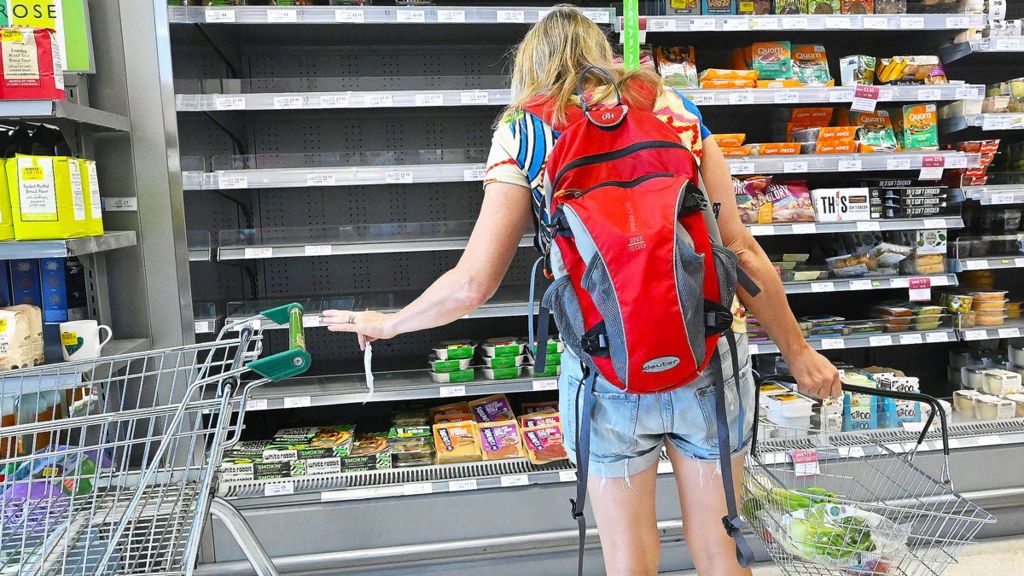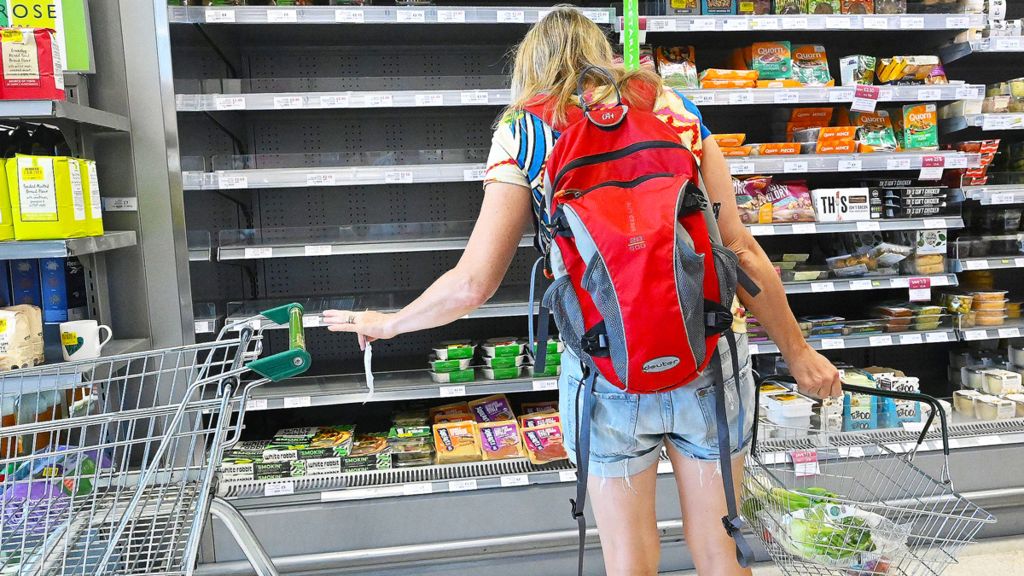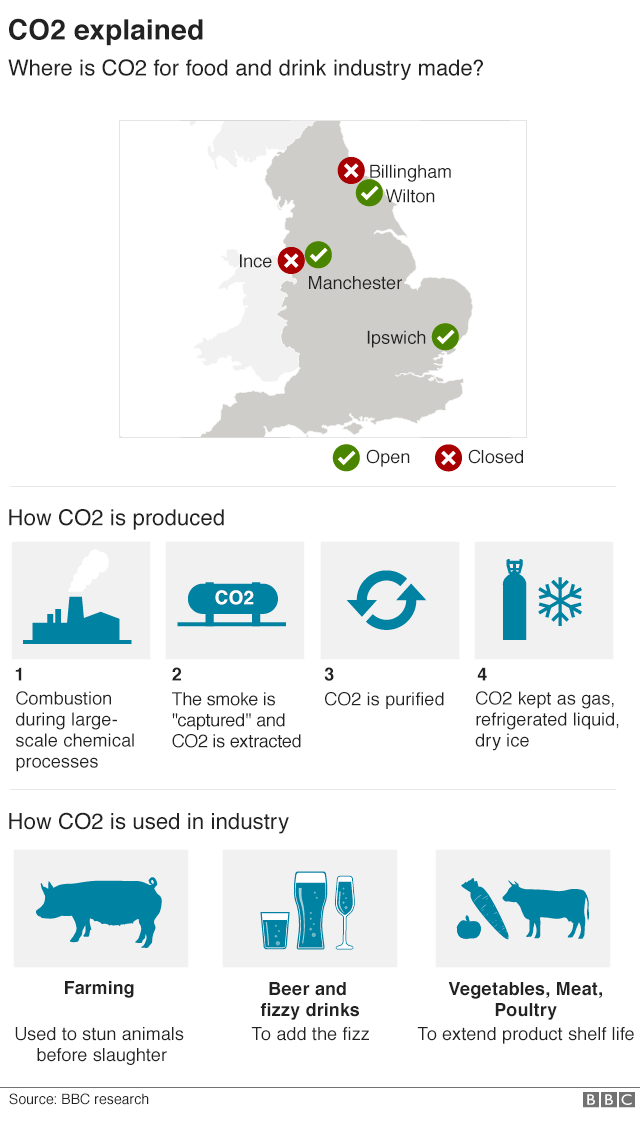Why is there a CO2 shortage and how will it hit food supplies?
The food and drink industry is warning of supermarket shortages because of a lack of CO2. …

- Published
- 3 hours ago
 image source, Getty Images
image source, Getty ImagesThe amount of carbon dioxide (CO2) the UK produces has halved – prompting warnings of supermarket shortages.
That’s because food and drink firms use CO2 in hundreds of products, from fizzy drinks to bagged salads.
Why is CO2 so important to the food and drink industry?
Food grade CO2 is used in hundreds of products.
It is used:
- to carbonate water, soft drinks and alcoholic drinks
- to dispense drinks and beers in pubs
- to promote the growth of plants – such as cucumbers – in greenhouses
- to stun pigs and chickens before slaughter
- for packaging meats, baby foods, fresh foods and baked products (CO2 extends shelf life by preventing bacteria)
- to keep food fresh in transport (CO2 is used in the form of dry ice and snow)
Source: Food and Drink Federation/Global Counsel
How is the CO2 shortage affecting food supplies?
The CO2 issue is “escalating quickly” and causing a “big supply issue”, one supermarket executive told the BBC.
“The big meat suppliers are saying they have two to three days’ supply and are now having to prioritise how they use what they have,” he said.
Ranjit Singh Boparan – owner of the Bernard Matthews poultry brand and 2 Sisters Food Group – said the shortage was a “body blow” to the industry.
The Food and Drink Federation, stressed the UK was not going to run out of food, but there would be “major concerns” over supply to supermarkets and other food outlets.
It said: “The knock-on effects of this may well be felt right the way through to the end of the year and particularly over the key Christmas trading period.”
What else is CO2 used for?
Remaining UK carbon dioxide production is being prioritised for medical uses.
It is used during some invasive surgeries to stabilise body cavities, to stimulate breathing and to get rid of warts and moles.
CO2 is also used by the nuclear industry as a coolant.
And it is used commercially in fire extinguishers, for inflating life rafts and life jackets, and as a liquid solvent.
Why is there a CO2 shortage?
Two large UK fertiliser factories, on Teesside and in Cheshire, have stopped work because of soaring wholesale gas prices.
The plants, owned by CF Industries, also make CO2 – as a by-product.
Because the fertiliser factories have stopped working, there has been a cut of 60% of the UK’s food-grade carbon dioxide supply.

How could CO2 supplies be increased?
Finding a solution could be difficult, says Lilah Howson-Smith – a senior analyst with the political risk consultancy Global Counsel.
“It’s dependent on the supply and demand for fertiliser, not demand for the CO2 itself. That means there is a real fractured sense of responsibility when it comes to solving the problem,” she said.
“And politically, there is no single point of responsibility in government which makes fixing things more tricky. It’s shared between departments – agriculture, business and the Cabinet Office.”
He said he had spoken twice to the company’s chief executive and was “he is “very hopeful” of finding a way to ensure production would resume “as quickly as possible”.
Wasn’t there a CO2 shortage in 2018?
Yes there was – caused by a usual summer drop in production, and a heatwave which increased demand for drinks and frozen products.
What is CO2?
At room temperature, carbon dioxide is a colourless, odourless gas.
In the Earth’s atmosphere, increased levels of CO2 contribute to global warming.
It is naturally produced when:
- humans and animals breathe
- during combustion (for example petrol and diesel in cars)
- things ferment or decompose
Its molecules have one carbon and two oxygen atoms, which is why its chemical formula is CO2.


